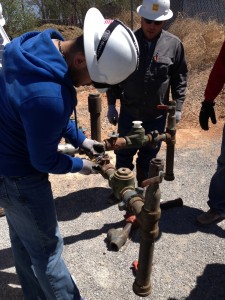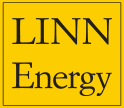
Process Safety
Process Safety Management (“PSM”) is the proactive identification, evaluation and mitigation or prevention of potentially harmful incidents that could occur as a result of failures in processes, procedures or mechanical equipment. At relevant facilities, LINN has procedures in place to handle PSM.
An example of a PSM element is operating procedures that describe tasks to be performed, data to be recorded, operating conditions to be maintained, samples to be collected and safety and health precautions to be taken. Operating procedures are reviewed by engineering staff and operating personnel to verify their accuracy and that they provide practical instructions on how to safely carry out job duties.
Another example is Process Hazard Analysis (“PHA”). A PHA is a systematic way to identify and analyze the extent of potential hazards associated with the processing or handling of regulated chemicals. A PHA provides information that assists employers and employees in making decisions for improving safety and reducing the consequences of unwanted or unplanned releases of hazardous chemicals.
LINN provides PSM training to applicable staff. We track process-related incidents to gain a better understanding as to why they occurred and how to prevent similar incidents from reoccurring. LINN performs compliance audits and continuously strives to improve these safety metrics.
Employee Focus
LINN remains dedicated to safe operations so that all of our employees return home safely each day. We take action to implement programs aimed at mitigating safety incidents, highlighting good safety performance and making safety a meaningful topic for our employees and their families.
EHS Committees
To give additional ownership of operation-level safety performance to our employees, LINN formed EHS Committees in each of our operating areas in 2012. The committees identify, plan, assist in the implementation of, and monitor and report on EHS initiatives that promote a safe, healthful and environmentally friendly workplace. The EHS Committees are comprised of area individuals such as foremen, lease operators, roustabouts, office employees and EHS representatives. The committees meet frequently, often monthly, to discuss safety initiatives and the overall progress towards specific safety goals that are then shared with all employees during group safety meetings.
Good Catch Program
At LINN, we define a “Good Catch” as a close call or an event that had the potential to cause a serious incident, but did not. This could be due to good fortune, corrective action or intervention. The Good Catch program was created to allow employees to share lessons learned from close call events to prevent similar incidents from reoccurring.
By asking four key questions, the Program is structured to allow participants to think critically about the incident and the possible alternative outcomes:
- What happened?
- What could have happened?
- What did you do?
- What could be the solution?
What Matters Most Program
To help personalize LINN’s safety message, the What Matters Most program was established in 2010. The program encourages employees to talk with their spouse, children, grandchildren, extended family and friends about everyday safety issues and healthy lifestyle choices. Beginning in 2011, a themed art contest was established for the children of LINN employees. Each year, employees are encouraged to invite their children to submit art work related to everyday safety issues and healthy lifestyle choices. We believe that the contest provides additional focus on safety, especially off the job.
Contractor Focus
Contractors play a large part in our day-to-day operations and in the overall safety performance of our operations. We hold regular safety meetings with our contractors and conduct frequent contractor audits and validations to promote LINN’s culture of safety.
Contractor Safety Meetings
In addition to our pre-job safety meetings, LINN periodically reviews safety expectations with our contractors to establish safety standards. The safety meeting topics are developed by each facility’s EHS representative and address issues such as incident reporting requirements, minimum personal protection equipment and lock-out/tag-out procedures. Contractors are also given our Contractor Environmental, Health and Safety Requirement booklet to review and are asked to sign and return their copy to signify their understanding of LINN’s safety culture.
Contractor Validations
We perform several contractor validations each year in each location. Depending on risk, frequency of use and target activities, contractors are selected to review or audit environmental and safety procedures, giving a hands-on confirmation of expectations.
All new vendors are screened. Additionally, we maintain an Approved Vendor List that serves as the main resource when hiring contractors. Companies on the Approved Vendor List have already been vetted through the service and our internal processes.
Safety Training

LINN understands that ongoing training is essential to maintain a safe and responsible workforce. We provide a variety of safety training opportunities to employees, including hands-on training programs and training videos. Additionally, many EHS Safety Committees conduct training initiative programs. For example, the Committee at one of our locations developed a training station to simulate actual field conditions for lock-out/tag-out procedures. The training team focused on revising typical lock-out/tag-out training and made it into three separate initiatives: preparing the instructors, conducting classroom exercises and applying the skills learned in the hands-on training.

Across our operations, we have developed safety decals that can be added to an individual’s hardhat to demonstrate his or her participation in LINN’s safety programs and recognize good work.
